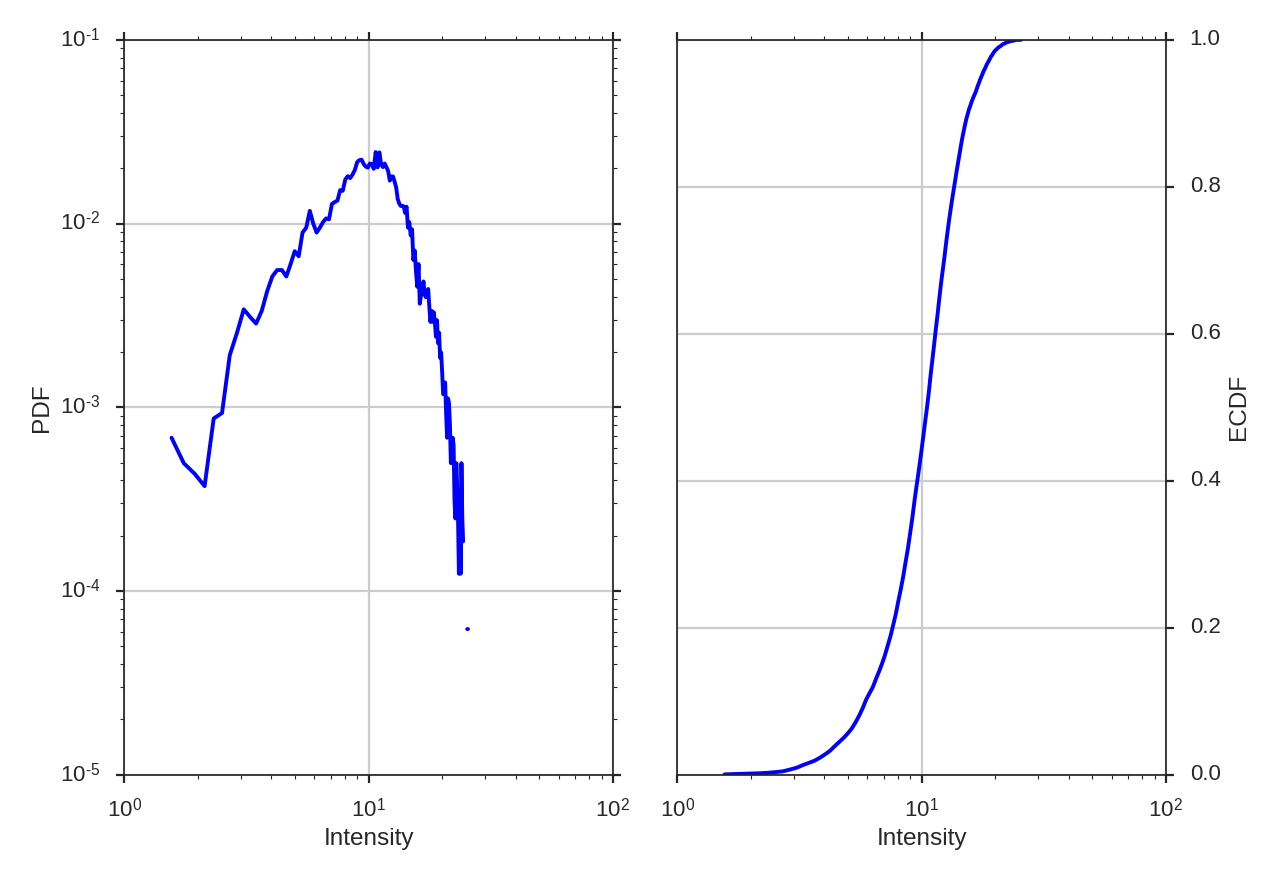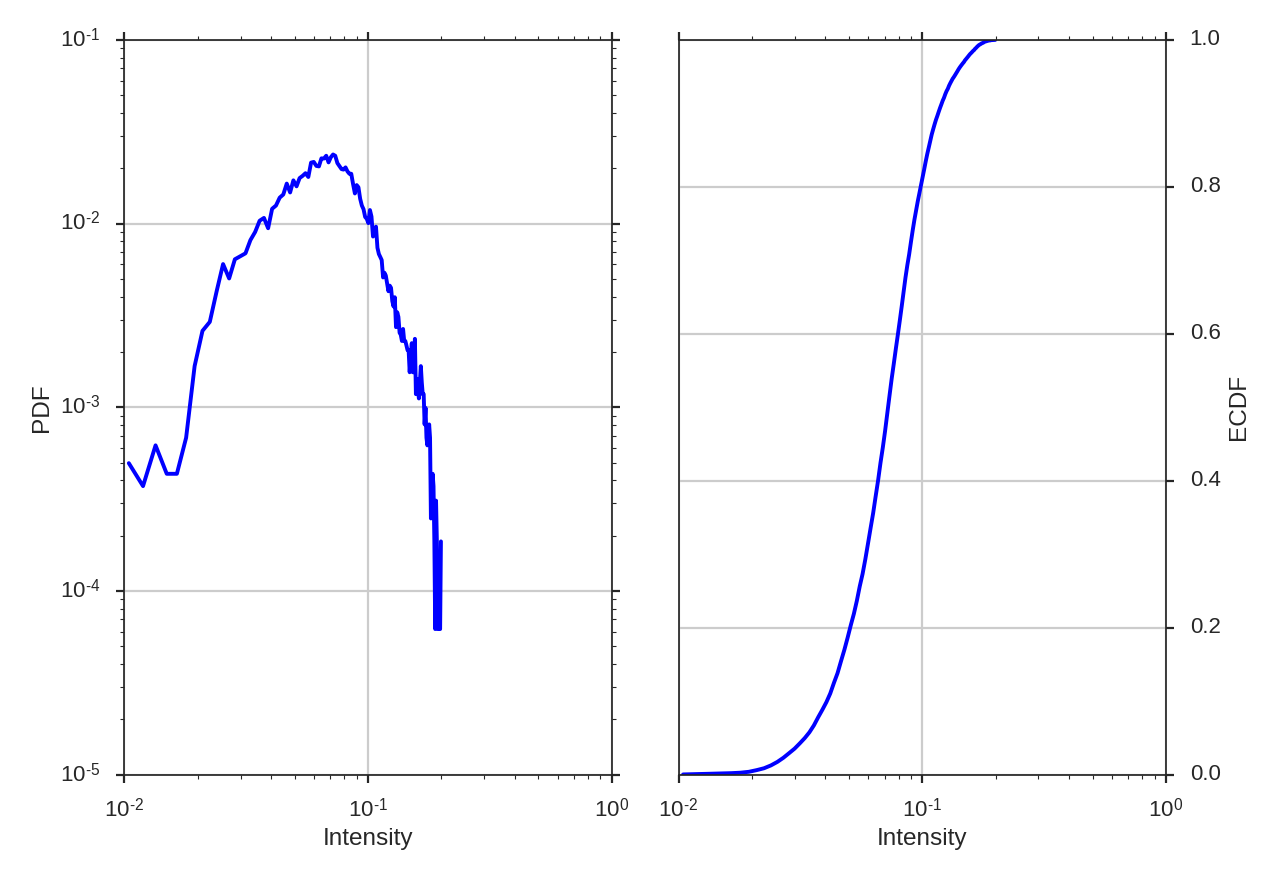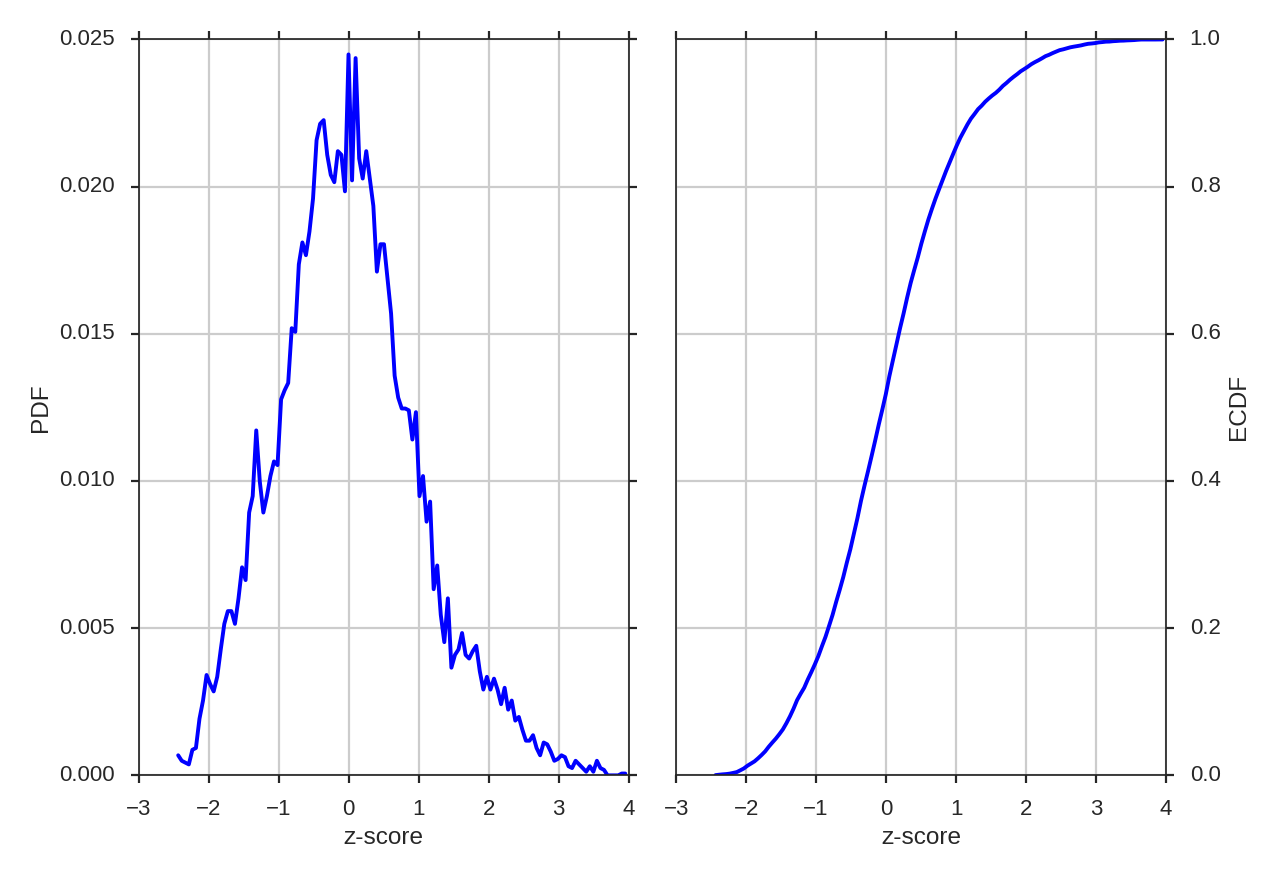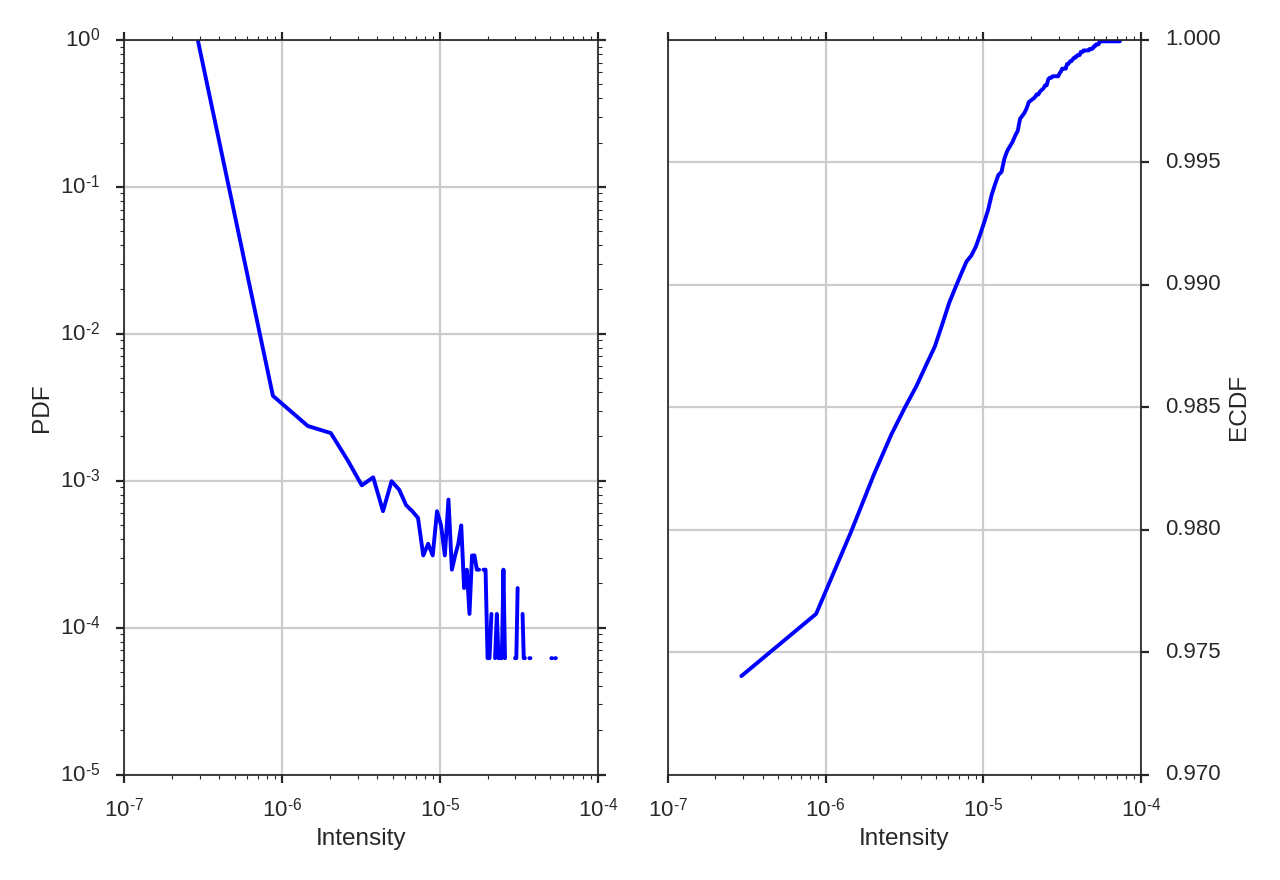PDF¶
Overview¶
A common technique used in ISM and molecular cloud studies is the probability density function (PDF). Often, column density or extinction values are used to construct the PDF. Intensities may also be used, but may be subject to more severe optical depth effects.
A plethora of papers are devoted to this topic, and there is much debate over the form of these PDFs. Because of this TurbuStat addresses only the creation of the PDF, and its associated ECDF. All comparisons purposely use non-parametric approaches to be as general as possible.
Using¶
The data in this tutorial are available here.
We need to import the PDF code, along with a few other common packages:
>>> from turbustat.statistics import PDF
>>> from astropy.io import fits
>>> from spectral_cube import SpectralCube
Since the PDF is a one-dimensional view of the data, any dimension data can be passed. For the tutorial, we will use the zeroth moment (integrated intensity) and the full PPV cube (using spectral-cube):
>>> moment0 = fits.open("Design4_21_0_0_flatrho_0021_13co.moment0.fits")[0]
>>> cube = SpectralCube.read("Design4_21_0_0_flatrho_0021_13co.fits")[0]
Starting first with the zeroth moment, the PDF class is called:
>>> pdf_mom0 = PDF(moment0, min_val=0.0, bins=None)
>>> pdf_mom0.run(verbose=True)

The resulting PDF and ECDF of the data are displayed. Using min_val, a minimum value to consider in constructing the PDF can be given. A custom array of bin (edges) may also be given using bins. By default, the bins are of equal width, with the number set by the square root of the number of data points (a good estimate when the number of samples is >100).
If an array of the errors is available, these may be passed as weights:
>>> moment0_err = fits.open("Design4_21_0_0_flatrho_0021_13co.moment0_error.fits")[0]
>>> pdf_mom0 = PDF(moment0, min_val=0.0, bins=None, weights=moment0_error.data**-2)
>>> pdf_mom0.run(verbose=True)

For comparisons to other PDFs, standardizing the data to have a mean of zero and standard deviation of one is common practice in statistics. Standardization is enabled with use_standardized=True:
>>> pdf_mom0 = PDF(moment0, use_standardized=True)
>>> pdf_mom0.run(verbose=True)

If you are seeking to fit a model to the PDF, the PDF values and bin centers are accessed through pdf and bins, respectfully.
The class and function calls are identical when using a PPV cube:
>>> pdf_cube = PDF(cube).run(verbose=True)

References¶
As stated above, there are a ton of papers measuring properties of the PDF. Below are a few biased examples of papers with different PDF uses and discussions: